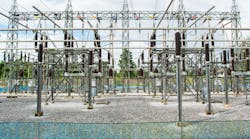The rapid evolution of communication and control technologies, delivering advanced capabilities, efficiencies and opportunities, is a major aspect of why digital substations are now readily achievable. A sharp group of authors from Schweitzer Engineering Laboratories, Inc. contend the design of the communications network architectures between primary substation equipment and the protective relays installed in the control house is one of the keys to realizing all the benefits of a digital system. A great paper presented at the 70th Annual Conference for Protective Relay Engineers (CPRE) reviews their analysis and provides some recommendations. You can find it here: http://prorelay.tamu.edu/wp-content/uploads/sites/3/2017/04/Choose-Simplicity-for-a-Better-Digital-Substation-Design-1.pdf.
Most utility engineers now accept that digital substations are the new standard for modern electric systems for a variety of reasons. Often sited are safety, reliability, cost savings, availability, ease of system configuration and updates, system documentation, cyber security and compatibility to standardized technologies based on IEC 61850. A fully digitized system utilizing 61850 standards provides interoperability at all levels from station to bay to process using digital sensors, merging units and nonconventional instrument transformers (NCITs).
The authors of the above referenced paper dig into some digital design issues to illustrate important points. For example, even though replacing analog systems with digital microprocessors decreases the mean time between failures to an amazingly low one failure per microprocessor per 300 years, it is still important to keep systems as simple as possible, thereby reducing the number equipment units that could fail. The paper explains two methods used to implement a process bus—a switched network and a point-to-point network—and compares various aspects of these architectures. The authors believe the point-to-point network design is less complex, has lower latency and low jitter potential. Further, it does not require a complicated external time reference system and is simpler to design because there is no need for tools such as virtual local area network management (VLANs) or engineered software defined network (SDN) failure path flows. Finally, this paper introduces a new point-to-point, EtherCAT®-based digital substation solution that the authors argue is robust, simple to use, and secure.


